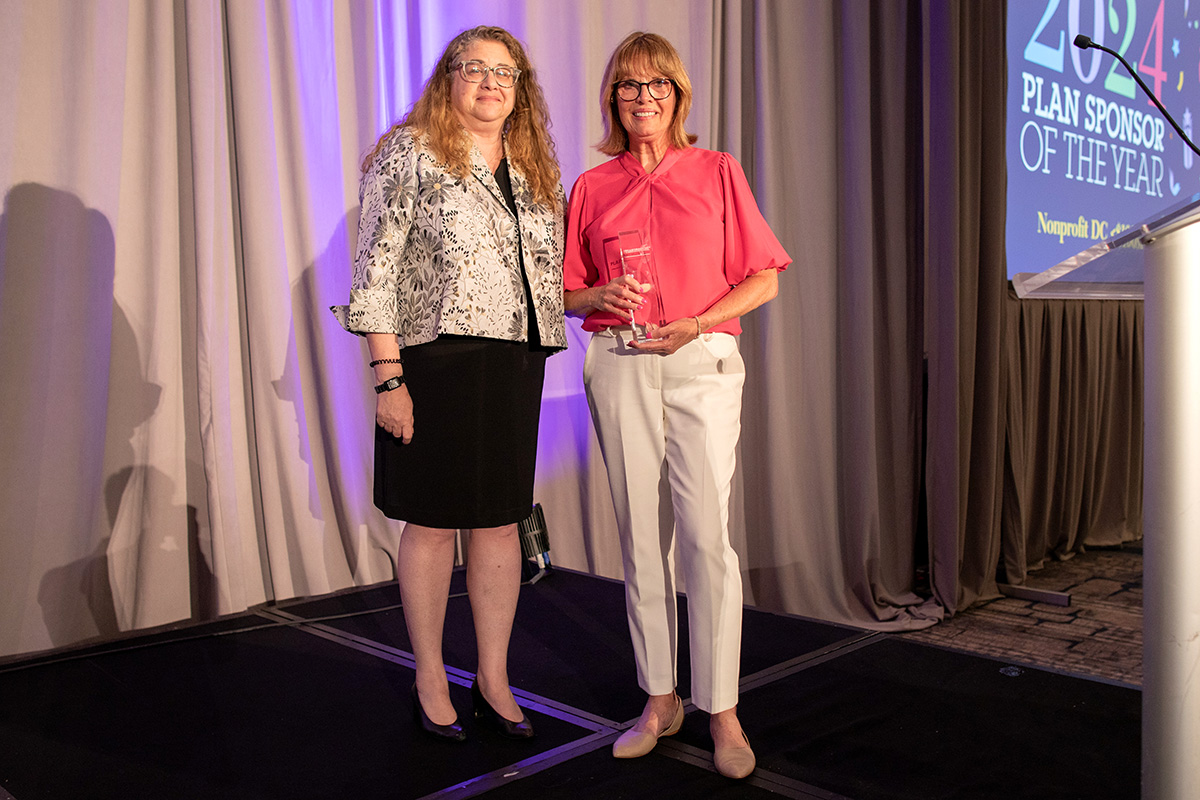Benefits and Human Resources Service Center Manager
-
Location:Baltimore, Maryland
-
Plan:403(b)
-
Plan Assets:$74.3mm
-
Number of Participants:2,505
-
Participation Rate:95.4%
-
Average Deferral Rate:4.2%
-
Default Deferral Rate:2%
-
Default Investment:T. Rowe Price Age-Based Retirement Fund
-
Automatic Enrollment:
-
Automatic Escalation:
-
Employer Contribution:4% nonelective contribution
-
Recordkeeper:T. Rowe Price
-
Financial Wellness Educator:T. Rowe Price
Catholic Charities of Maryland’s win, in large part, reflects the agency’s recognition that the best approach for its employees was a simple, accessible plan, even if that meant forgoing some trendy plan features.
The organization helps hundreds of thousands of Marylanders in need, including children and families, immigrants, individuals with intellectual disabilities and people living in poverty. “We recognized that our employees are so focused on others that they sometimes forget to take care of themselves and their future,” says Karen Funk, benefits and human resources service center manager at Catholic Charities’ offices, in Baltimore. “We wanted to help them plan for retirement.”
To this end, Catholic Charities added automatic enrollment, at 2%, for new hires as of October 2016. This improved participation, but many employees—i.e., nonparticipants hired before then, employees who later opted out and non-benefit-eligible employees—still did not contribute. T. Rowe Price suggested a retro-enrollment model, which the agency implemented last July, re-enrolling, at 2%, all noncontributing participants.
The agency did not stop there. “We understand that complacency acts as an opponent to deferred contributions,” Funk says. “Once the initial deferral begins, employees rarely make changes or even look at their account again.” So the committee implemented automatic increase. For employees deferring up to 3%, the rate now climbs 1% each July to a maximum 4%.
Still, given workers’ financial constraints, the employer worried about pushback. The sponsor sent letters, made sure managers understood the new features, and added information to their agency intranet.
“This is not a very highly paid population, so we wanted to create a mechanism, through plan design, that wouldn’t create an undue hardship for them,” says Jeremy McCurdy, an account manager at T. Rowe Price, Catholic Charities’ recordkeeper.
Participation grew from 67.6% in December 2022 to 95.4% by December 31, 2023. “Hardly anyone opted out,” Funk says. “We’re pleased with the results. And we won’t stop there.” Catholic Charities contributes 4% of eligible annual earnings for benefit-eligible employees, including nonparticipants. Other improvements to the plan, last July, included streamlining hardship withdrawals and fixing the automatic cash-out feature—now if employees neglect to provide direction, cash-outs of under $5,000 go into an individual retirement account vs. a check.
Catholic Charities had T. Rowe Price host multiple educational sessions early this year to explain the new features and available plans, offer participants tips on how to maximize their retirement benefits, and demonstrate the online account features available to them.
“The organization did a nice job, being mindful about how it implemented these solutions, from a plan design perspective that would have an impact on its macro population,” McCurdy says.
—Beth Braverman


 Get the latest news daily
Get the latest news daily